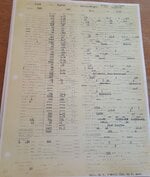Wild_Bill_Kelso
Senior Master Sergeant
- 3,231
- Mar 18, 2022
I never understood the reason for that oil tank. Was the extra oil meant to cope with dust?
I think they underestimated the effects of the faring on drag. It had a streamlined shape but it's just too large, anything that sticks out into the slipstream has a cost in drag. And that Vokes filter is a lot.


I think they underestimated the effects of the faring on drag. It had a streamlined shape but it's just too large, anything that sticks out into the slipstream has a cost in drag. And that Vokes filter is a lot.

